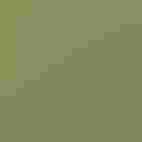Common Nighthawk
At a Glance
This widespread and familiar bird may hunt by day or night, catching flying insects in the air. Its bounding, erratic flight and angular wings make it unmistakable except in the southwest and in Florida, where two other types of nighthawks occur. Originally nesting on open ground, Common Nighthawks have learned to nest on flat gravel roofs; their nasal cries and 'booming' display dives may be heard over many cities.
All bird guide text and rangemaps adapted from Lives of North American Birds by Kenn Kaufman© 1996, used by permission of Houghton Mifflin Harcourt Publishing Company. All rights reserved.
Category
Nightjars, Upland Ground Birds
IUCN Status
Least Concern
Habitat
Arroyos and Canyons, Coasts and Shorelines, Desert and Arid Habitats, Fields, Meadows, and Grasslands, Forests and Woodlands, Shrublands, Savannas, and Thickets, Urban and Suburban Habitats
Region
Alaska and The North, California, Eastern Canada, Florida, Great Lakes, Mid Atlantic, New England, Northwest, Plains, Rocky Mountains, Southeast, Southwest, Texas, Western Canada
Behavior
Flap/Glide
Population
23.000.000
Range & Identification
Migration & Range Maps
A long-distance migrant, wintering mostly in South America. Often migrates in flocks, sometimes numbering in the hundreds.
Description
10" (25 cm). Usually seen in flight, showing white bar across outer part of angled, pointed wings. At rest, note heavily barred underparts In Florida and southwest, see Lesser Nighthawk and Antillean Nighthawk.
Size
About the size of a Crow, About the size of a Robin
Color
Black, Brown, Gray, Tan, White
Wing Shape
Long, Pointed, Tapered
Tail Shape
Long, Notched
Songs and Calls
A loud nasal call, peent or pee-yah, heard primarily at dusk.
Call Pattern
Falling, Flat
Call Type
Buzz, Odd, Scream
Habitat
Open country in general; often seen in the air over cities and towns. Inhabits any kind of open or semi-open terrain, including clearings in forest, open pine woods, prairie country, farmland, suburbs and city centers.
Sign up for Audubon's newsletter to learn more about birds like the Common Nighthawk
Behavior
Eggs
2, rarely 1-3. Whitish to pale buff or gray, heavily spotted with brown. Incubation is mostly by female, about 19 days. Incubating bird may shift position during the day so that the sun is always at her back.
Young
Both parents care for young, feeding them regurgitated insects. Age of young at first flight is about 21 days.
Feeding Behavior
Forages most actively near dusk and dawn, also during the day and at night, perhaps especially on moonlit nights. Forages mostly in flight, scooping up flying insects in its wide, gaping mouth. Will feed around bright lights at night, taking the insects attracted there. May rarely take insects from the ground.
Diet
Insects. Feeds mainly on flying insects, including beetles, moths, grasshoppers, and many others. Will feed heavily on swarms of winged ants or termites.
Nesting
In male's courtship display flight, his wingbeats become even more stiff and choppy as he circles and hovers high in the air, calling repeatedly; then he goes into a steep dive, with a rushing or "booming" sound made by air passing through wing feathers at bottom of dive. Landing near female, he spreads his tail, rocks back and forth, and calls. Nest site is on ground or bare open soil, often in a sandy place; also on gravel roofs, sometimes on top of a stump or other raised object. No nest built, eggs laid on flat surface.
Conservation
Conservation Status
Declining seriously in numbers in many parts of North America. Causes may include changes in land use and overuse of pesticides. In some areas, nighthawks nesting on gravel roofs have been targeted by increasing urban populations of crows, which eat the eggs.
Climate Threats Facing the Common Nighthawk
Choose a temperature scenario below to see which threats will affect this species as warming increases. The same climate change-driven threats that put birds at risk will affect other wildlife and people, too.









